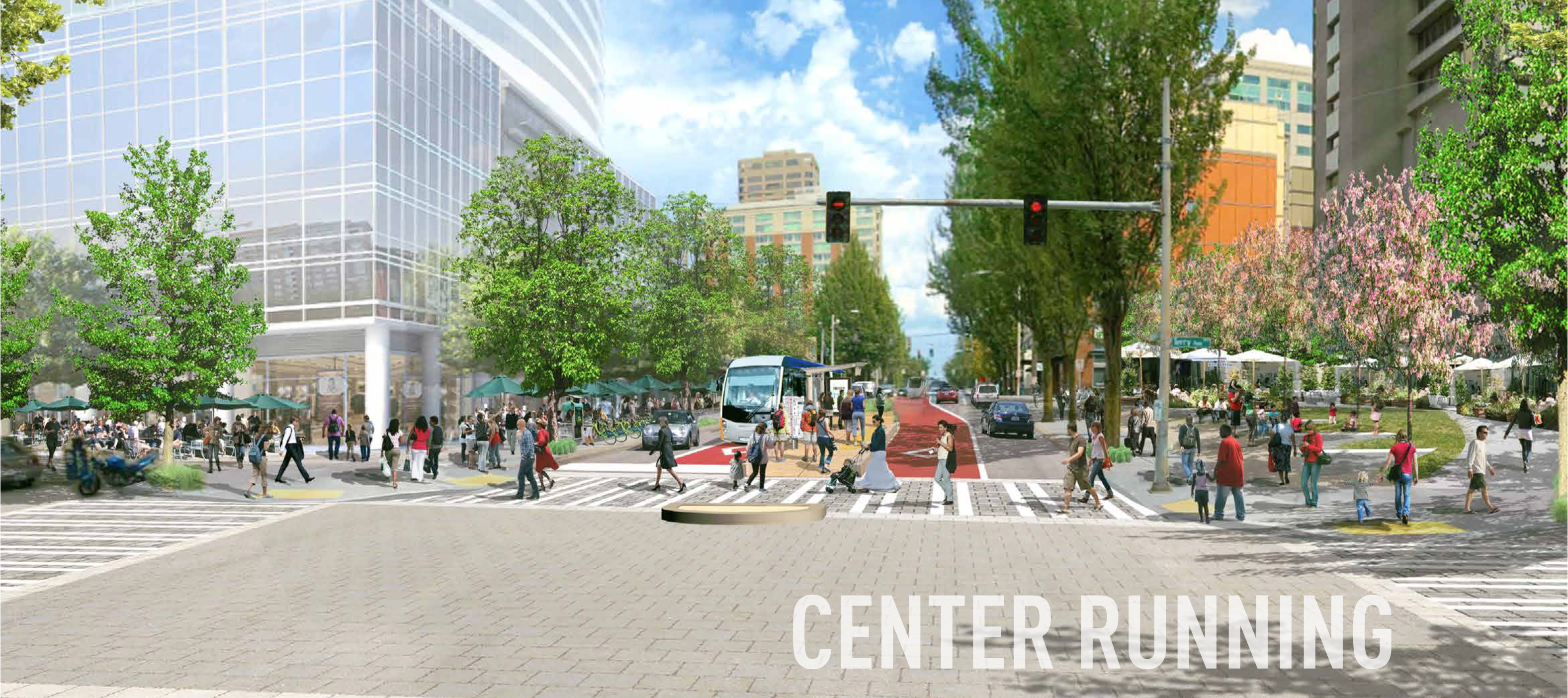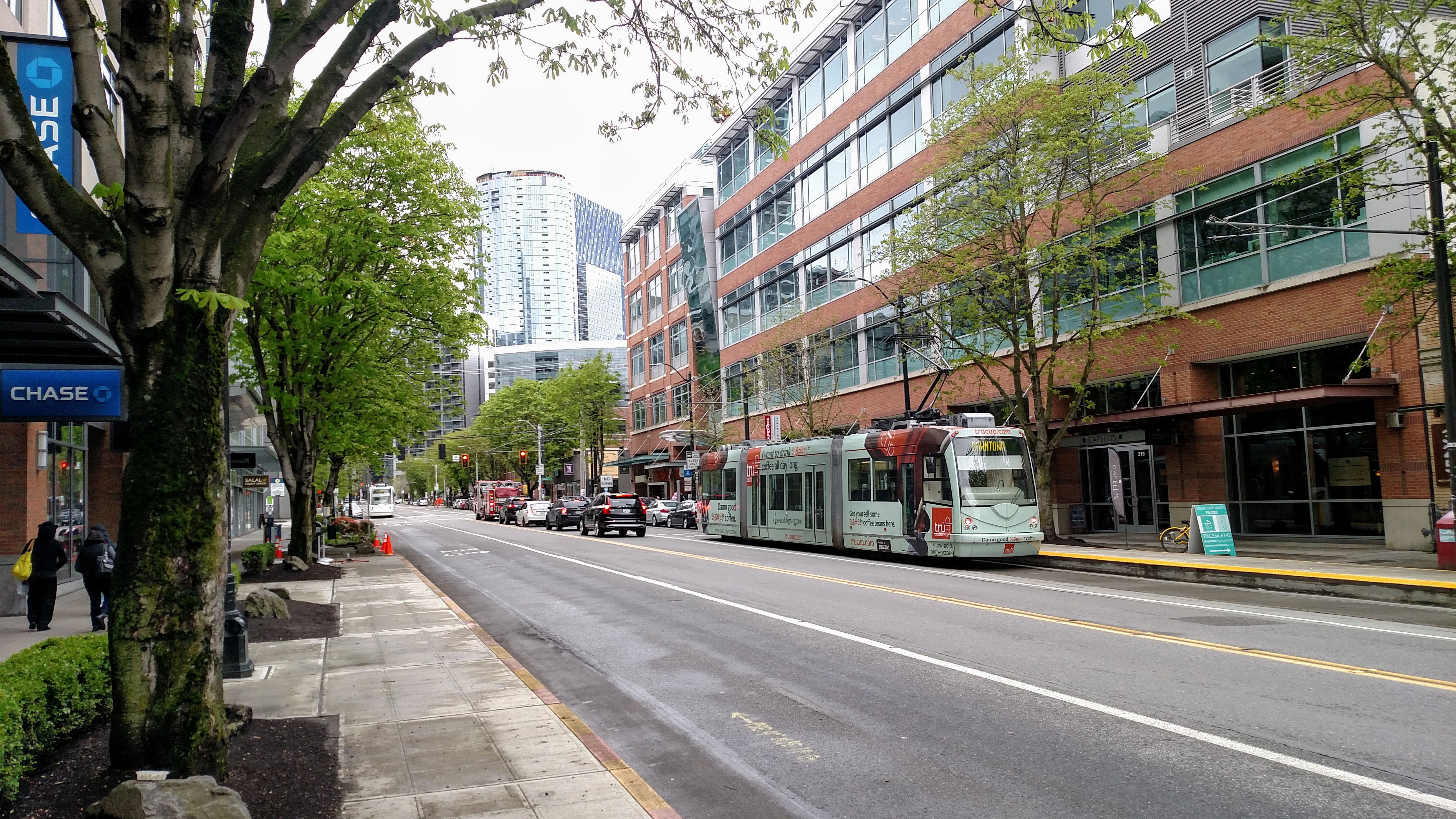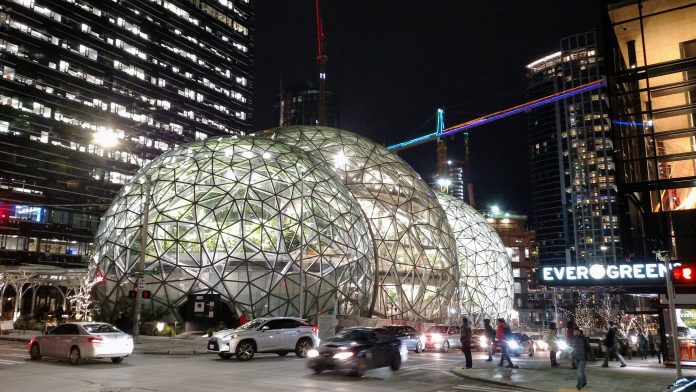The Seattle Department of Transportation (SDOT) estimates Center City Connector’s budget shortfall is $23 million, which prompted Mayor Jenny Durkan to put a six-month hold on the project to conduct an independent review. To meet Seattle’s transportation needs, the City should build the streetcar one way or the other. One potential source of funds is the business community–$23 million is pocket change to Amazon, a rapidly growing company racing Apple to be the first ever in human history with a trillion-dollar valuation.
Amazon’s contribution to the downtown streetcar would transform the South Lake Union Streetcar from a measly 1.2-mile-long campus circulator for Amazon (and the butt of many jokes) into a true regional asset with daily ridership exceeding 20,000, according to SDOT projections. That’s worth investment from Amazon, and it would temper the criticism that Amazon is not a good corporate citizen relative to its colossal size.
As it stands now, we have no clear indication where many key political players ultimately stand on the streetcar and utility project that has past $200 million in costs, apparently without project managers bothering to tell the mayor or Seattle City Council until last month. Mayor Durkan’s statement hinted at turmoil and project mismanagement at SDOT.
“There are too many questions about the true costs of this project and the risks to taxpayers,” Mayor Durkan said.
Nonetheless, many transit advocates, including Seattle Subway, Downtown Seattle Association, and many here at The Urbanist, remain convinced of the fundamental value of the Center City Connector streetcar as a key transit artery. Exclusive center lanes will make the new streetcar much more efficient than its mixed-traffic counterparts that exist now, and the delay the administration has called for itself is estimated to cost $10 million to $14 million in escalated contract costs when the project is resumed. Seattle Subway made its case last Tuesday that the streetcar project must go forward.The Downtown Seattle Association provided the following statement:
As a member of the Seattle Streetcar Coalition, the Downtown Seattle Association has been an enthusiastic supporter of the Center City Connector project. We view this 17-block center city connector as a key component of a broader downtown mobility plan, augmenting light rail expansion, transit enhancement and other capital transportation projects. Intended to leverage hundreds of millions in public and private investments, including federal funding, the streetcar will provide important connections to key downtown neighborhoods.
However, given the estimated $23 million shortfall for the streetcar and utility work, we understand the mayor’s decision to pause the project until the city can complete its review. We look forward to continuing to work with her administration as we strive to meet our downtown mobility goals and as they work to bring this project in on budget.
Resisting Trump?
Anxiety over the threat to the Center City Connector’s future was compounded by rumors that Mayor Durkan is planning to announce a “reset” on Move Seattle investments, possibly involving cutting promised RapidRide, bicycling, and/or pedestrian projects. The Durkan administration will blame these cuts on expected federal dollars to supplement project budgets drying up when Trump took office, apparently. While Mayor Durkan has framed many of her actions around resisting Trump, cutting and running on transit projects would seem to let the president and his anti-transit ilk get their way. Seattle’s reneging on a Federal Transit Administration grant that had already been approved for the project could also spell trouble for future grants, like the Seattle is applying for in conjunction with the Madison BRT and Roosevelt RapidRide projects.

What is Mayor Durkan’s Plan?
We have a few loose frameworks for what Mayor Durkan intends to invest in rather than cut, but not much. On Wednesday, Mayor Durkan announced her support for decongestion pricing shortly after announcing some delays and revisions to the One Center City plan to overcome Downtown congestion. Mayor Durkan’s Climate Action plan, also released this week, didn’t have much to say about active transportation or the land use policy to support it. That leaves the administration facing a very tough political lift to carry forward Seattle’s climate action goals: becoming the first American city to enact a decongestion pricing plan.
And more immediately, the period of maximum constraint on Downtown streets is nearly upon us, and we still lack a clear plan to keep people moving. With all the uncertainty around federal funding, Seattle would be foolish to give back the $83 million in federal funding it did secure for the Center City Connector. Amazon could help fill this funding vacuum and make sure Seattle doesn’t let another major transit project almost within its grasp slide between its fingers.
What Does Amazon Want?
One constant for this administration has been a desire to trim budgets–a boom-time austerity that has some scratching their heads. Last month, Mayor Durkan did ascribe some numbers when announced she intended to cut City department budgets 2% to 5% because–although we’re riding a major economic boom–we’re due for a recession she said. So perhaps the business community will get a lowered tax burden over the course of the Durkan administration, but Amazon also claims to want high quality transit and made one of its major criteria in their search for a second headquarters.
Perhaps the answer has to do with the paradox of wanting to eat your cake and have it too. Corporations like Amazon want low taxes, but they also want high quality infrastructure. Unfortunately, budget trimming leaves precious little money for public works many in the business community say they want–especially when the Seattle’s boom is driving up construction costs and enticing population growth exceeding 20,000 people per year. That rapid population growth is forcing the City to stretch services farther than they’ve ever been stretched before.
The Price of Inaction
If Amazon does not save the Center City Connector, one of the mightiest corporations in America will continue to be locally recognized for stinginess, a rinky-dink low-ridership streetcar, protected bike lanes that don’t go anywhere, and the Mercer Mess–a car sewer with “cutting edge” adaptive signals that prey on pedestrians. Amazon wants to be known for urbanism; that’s why it chose a campus in Seattle’s downtown core. But good urbanism takes investment. This faux urbanism going on in South Lake Union right now needs mending. Seattlietes often associate South Lake Union and Amazon with traffic and Mercer Street gridlock. Wouldn’t a project projected to make the streetcar the region’s busiest transit line–save for Link light rail–be a much better trademark?

Amazon should seek to change the narrative. Invest in the Center City Connector and make it clear Amazon isn’t just about superficial urbanism to impress unwitting out-of-town job prospects during site visits. Make the streetcar functional and useful to the whole city. Amazon isn’t to blame for SDOT botching a streetcar project, but Amazon’s rabid success did contribute to inflated construction costs. Taking leadership to make sure the budget shortfall is closed and the streetcar is built would send a message that Amazon cares about Seattle. It’s the right thing to do.
Amazon didn’t respond to my request for comment on the streetcar.
Doug Trumm is publisher of The Urbanist. An Urbanist writer since 2015, he dreams of pedestrian streets, bus lanes, and a mass-timber building spree to end our housing crisis. He graduated from the Evans School of Public Policy and Governance at the University of Washington in 2019. He lives in Seattle's Fremont neighborhood and loves to explore the city by foot and by bike.


